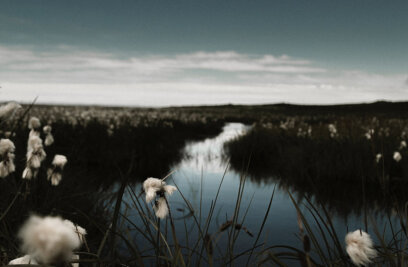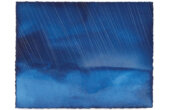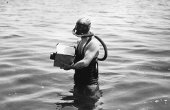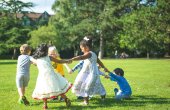An Environmentalist’s Lessons for an Improvisational Life
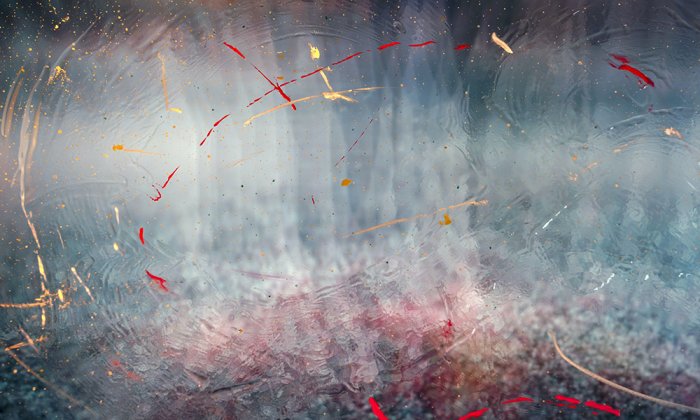
I recently took a walk in the woods on a rainy, cool, late September morning. At this time of year, the Monadnock region, the hill country of southwestern New Hampshire, is in the early stages of what will become a rapid and intensely colorful foliage display. Often when I take a walk I have a plan or tentative destination. But if something unexpected beckons or there is an intriguing fork in the road, I may decide to change my course.
As I began my walk, I just wanted to breathe the air, move my body, and read the day. A few hundred yards from the house there’s a protected wetland, originally a beaver pond, nestled like a small bowl against the backdrop of Mount Monadnock. I didn’t intend to visit the wetland, but I caught a glimpse of the colors. Of all the paths I might have chosen, this is where I responded to the subtle magnetism and traveled off the trail. This simple decision guided me into a new realm of observation. I spent the remainder of my walk skirting the edges of the wetland, noticing the patterns of the leaves falling into the shallow water, observing how the foliage revealed the biogeographic distribution of trees, watching the breeze gently ruffle the patches of open water, and then listening carefully to the sounds of birds, a few lingering wood ducks, migrating hawks, and some resident chickadees.
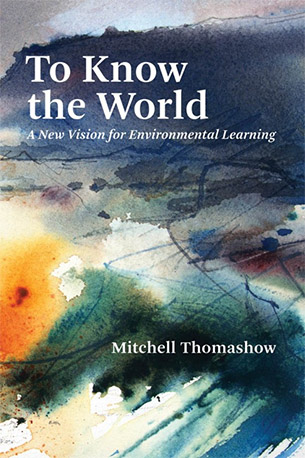
While standing on the wetland edge, I thought about the many transitions of the landscape — the boundary between land and water, zone between shrubs and trees, and mushy, mossy ground in between. I thought about transitions in the passage of time — the last green vestiges of summer, the cooling air, and the foreshadowing of the future.
I shifted my attention and contemplated the longer passages of time. This wetland was formed by beavers who built a dam at the opposite end from where I was standing, flooding the trees and creating environmental stresses while forming a new landscape. This landscape was deforested in the 19th century, when the hill country of New Hampshire was used for sheep farming. Old stone walls mark the property boundaries. Far longer ago, it was covered by a glacier whose remnants are evident in the many large boulders. I wonder, too, what this landscape will look like 100 or 1,000 years from now, when it’s likely that a new climate regime will dramatically change the species and plant distribution. There are already clues to those changes in the various “invasive” species that line the wetland — travelers from other habitats that are making their presence felt here. I was “riffing” with the wetland, using its prompts to explore the present moment and its farther reaches.
This improvisational thought process, linked to the observation and interpretation of environmental change, is key to environmental learning and to what I call an improvisational life: a way of thinking that delights in having a plan and structure, and then using it to travel off the trail, so to speak.
“The more closely you observe patterns of waves as they break on the shore, the more likely you are to find patterns within those patterns, eventually being able to anticipate what may come next.”
John Ayto’s “Dictionary of Word Origins” suggests that “etymologically, if you improvise something, it is because it has not been provided for in advance.” The word improvisation emerges from the French improviser, descended from the Italian extempore, and then further descended from the Latin improvisus, meaning “unforeseen.” Amazingly, Ayto reports that the first recorded use of the verb in English is in a Benjamin Disraeli novel from 1826.
In terms of environmental learning, I think of improvisation as the ability to spontaneously respond to dynamic changes in the environment. When observing nature, this could mean looking at the ever-changing patterns, such as clouds floating across the sky, leaves rustling in the wind, water flowing down a stream, ocean waves crashing against the shore, migrating birds moving through the trees — biosphere phenomena that emerge from structural relationships, but are always different, an infinite variety of possibilities and pathways, changing according to the prevailing conditions. This is the essence of environmental change. I am less patient with the painstaking but equally important observational skills of identification and order. Yet this is a crucial aspect of environmental learning, and without it we would be floating in a world of dynamic change with no ballast or anchor. Environmental learning is a balance, then, between structure and improvisation.
Language and Place
In his magnificent book “Landmarks,” Robert Macfarlane cites his concern that in a recent edition of the “Oxford Junior Dictionary” many “nature” words were culled and replaced by “tech” words. For example, acorn, heron, and pasture (among others) were replaced by blog, broadband, and chat room. Macfarlane writes that “the substitutions made in the dictionary — the outdoor and the natural being displaced by the indoor and the virtual — are a small but significant symptom of the simulated life we increasingly live.”
This inspired Macfarlane to develop and curate a comprehensive glossary. He compiled “thousands of words from dozens of languages and dialects for specific aspects of landscape, nature, and weather.” These words are mainly specific to the British Isles along with the great variety of landscapes, languages, and cultures that contribute to its heritage. There are nine glossaries — flatlands, uplands, waterlines, coastlands, underlands, northlands, edge lands, earth lands, and woodlands. And each of those glossaries is subdivided accordingly. Here are the subsections for the coastlands glossary: bays, channels, and inlets; cliffs, headlands, and defenses; currents, waves, and tides; fishing and boats; lights, hazes, mists, and fogs; the sea; and shores and strands.
Let’s swim a little deeper to explore a few of the words in the currents, waves, and tides section. Adnasjur (Shetland Islands) refers to a large wave or waves, coming after a succession of lesser ones. Sruthbladh (Gaelic) is the violent motion of waves advancing on and receding from the shore. Here are a few words from the lights, hazes, mists, and fogs section. Woor (Manx) is the low-hanging sea mist that dims the light and chills the air. Glimro (Orkney) is a phosphorescent glimmer.
These words, like most in these glossaries, are place-based, grounded on observations that build on generations of perceptual experience. As you flip through the pages of “Landmarks,” you encounter patterns that you’ve observed but never thought to name. And you encounter descriptions of phenomena that you’ve never seen because they occur in an unfamiliar landscape. I love flipping through the glossaries because by doing so, I sharpen my perceptual skills, and feel empowered to observe patterns that I didn’t think had any real significance or I hadn’t ever noticed.
Consider that Macfarlane’s curated lexicon is specific to the British Isles, and although it may be relevant to similar landscapes in other realms, it doesn’t cover many of the world’s landscapes — deserts, savannas, ocean floors, volcanoes, jungles, and so on. You could create similar glossaries for just about any place on earth, resurrect the treasure of indigenous languages that describe those places, and develop a most spectacular knowledge base of landscapes and environmental change. Sadly, many of these words are disappearing and will soon be lost to human awareness.
These place-based words provide a wonderful catalog of observations, patterns, and interpretations of environmental change. You start with what you closely observe that’s right in front of you. Anyone who has spent time gazing at the sea has witnessed adnasjur. Indeed, the more closely you observe patterns of waves as they break on the shore, the more likely you are to find patterns within those patterns, eventually being able to anticipate what may come next. As you develop perceptual depth and observational awareness, you develop a lexicon of patterns that help you assess, interpret, and even anticipate environmental change. Inevitably there will be anomalies, and when they occur, you will be able to recognize them. The most extraordinary example of an adnasjur is a tsunami. Will familiarity with an adnasjur enable you to anticipate a tsunami? The Chao Lay, the so-called indigenous sea gypsies of Thailand, reportedly anticipated the catastrophic 2004 tsunami because they were so familiar with the patterns of ocean waves.
I appreciate Macfarlane’s approach because it’s so accessible. These wonderful glossaries open the doors of perception. Macfarlane notes that in the process of experiencing his project, “life and language collapsed curiously into one another.” He discloses that many of the subjects of his book (both the glossaries and connecting essays, based on his own explorations and the words of literary guides) “are often best represented not by proposition but by pattern, such that unexpected constellations of relation light up.”
“Landmarks” has hopeful and inspiring educational application. “We may have forgotten 10,000 words for our landscapes, but we will make 10,000 more given time,” writes Macfarlane. “This is why the penultimate glossary of the book is left blank, for you to fill in — there to hold the place-words that have yet to be coined.”
Expanding Your Awareness
In “Language Making Nature,” the naturalist David Lukas does exactly what Macfarlane suggests. He proposes a series of alternative field guides, or approaches to environmental perception that allow people to bathe in the direct experience of species and landscapes. Lukas challenges readers to create their own words to express how they perceive the biosphere. He provides various ways to deconstruct, re-create, and reorganize language by breaking words down and then putting them back together again. He explores root forms, affixes, suffixes, word origins, the use of vowels and consonants, and the use of older forms of words as taken from Old English, Anglo-Norman, French, Greek, and Latin. Lukas provides an outline of English word formation, utilizing affixation, compounding, conversion, blending, clipping, and word manufacture. And like any good field guide, there are many lists and examples to identify and then examine.
“Language Making Nature” moves beyond being a set of instructions to an educational inspiration. There are sections that propose topics for word creation with some helpful suggestions for getting started. Short chapters on place-name elements, texture, rock, seeing color, states of mind, wind, clouds, and species elaborate the possibilities. The essence of his project is neatly summarized in the section “Four Ways to Create Original Words”: “Borrow or repurpose old words or change them into new words. Add prefixes or suffixes to preexisting words. Convert a word to a new part of speech. Combine two or more words into a new compound word.”
And then Lukas adds a dose of philosophical instruction.
Bring every word to life:
—Know its roots
—Place it carefully
—Have it mean something.
On a brisk October day in the midst of foliage season in the New Hampshire woods, I wondered if I could utilize the Lukas method to expand my perceptual awareness through improvisation — the essence of pattern-based environmental learning. I was sitting on my porch when a dragonfly landed on my shirt. It flew away and then returned, landing on the white pages of the Lukas book. I had several moments to observe it. After its departure, I found my “Stokes Beginner’s Guide to Dragonflies” and identified it as a band-winged meadowhawk. But then I thought, Have I learned nothing? Give it your own name. And I realized what a poor observer I am. I would have to know much more about its life habits and habitats before I could give the dragonfly a fitting name. Maybe, I thought, I can give it many different names until one finally fits. Maybe I am caged by the language rules that I am familiar with, and as Lukas contends, the only way to break away from the blinders of rule-fixed language is to develop my skills. So I temporarily named it a Monadnock meadowhawk, linking it to my place.
Although I didn’t feel ready to use words to describe new impressions, I thought I might get partway there by writing down impressions of phenomena that I had no single word for. So here’s my list of foliage observations deserving of creative words or thought forms:
• the pointillist granularity of countless spectral foliage arrangements
• how the wind and shadows cause movement and motion while deepening the vibrational color forms
• the changing hues of blue sky through the canopy shadows
• multiple colors of leaves on the same tree, and the light of the sun reflecting differently off variably colored leaves
•passing clouds over the bright canopy
• colorful leaves falling like floating petals of rain
• how the forest floor becomes a more complex mosaic with each falling leaf
• a sequence of foliage arranged in the order of the spectrum
• the sound of insects on the last warm October day
I may not have invented new words, but the spirit of the Lukas inquiry challenged me to observe more deeply, explore patterns, and allow myself to use improvisation to inspire both processes. Improvisational learning occurred when I entered the observational flow of the moment and used patterns I recognized to help uncover new ones. The creative melding of language, place, and perception facilitates pattern recognition. Using language as an improvisational tool further enhances that prospect. There’s no reason to confine this observational method to linguistic forms. Why not use icons, visual symbols, dance movements, graphic designs, musical notes, musical scale systems, drumbeats, or other hybrid forms of communicating about and playing with our observations of the biosphere?
In the final chapter of “Landmarks,” Macfarlane suggests that a pertinent follow-up project would be a glossary of newly invented words that describe the environmental processes of the Anthropocene: “new-minted Anthropocene terms.” He asserts that “such a glossary would need to detail the topographies of toxicity and dereliction that we have made, the spectacles of pollution, corruption, and extinction we have induced, and the miracles of geo-engineering we have wrought.”
Are there words for the expanding gyre of plastic bottles in the Pacific Ocean, rapid bleaching of coral reefs, or unprecedented temperate climate microbursts that accompany climate change? Perhaps naming these anomalies allows us to take them more seriously than we do. This is a dark task indeed, but also a necessity for environmental learning. How do we identify and name unprecedented patterns of desecration? And to accompany these terms, can we also develop words and expressions to describe new forms of environmental activism and empowerment, or creative and sustainable solutions? Let’s add these challenges to the growing list of important tasks for the engaged environmental educator and concerned citizen.
Mitchell Thomashow is a writer, educator, and environmentalist focused on innovations in sustainability and environmental learning. He is the author of several books, including “Bringing the Biosphere Home: Learning to Perceive Global Environmental Change“ and “To Know the World: A New Vision for Environmental Learning,” from which this article is adapted.
